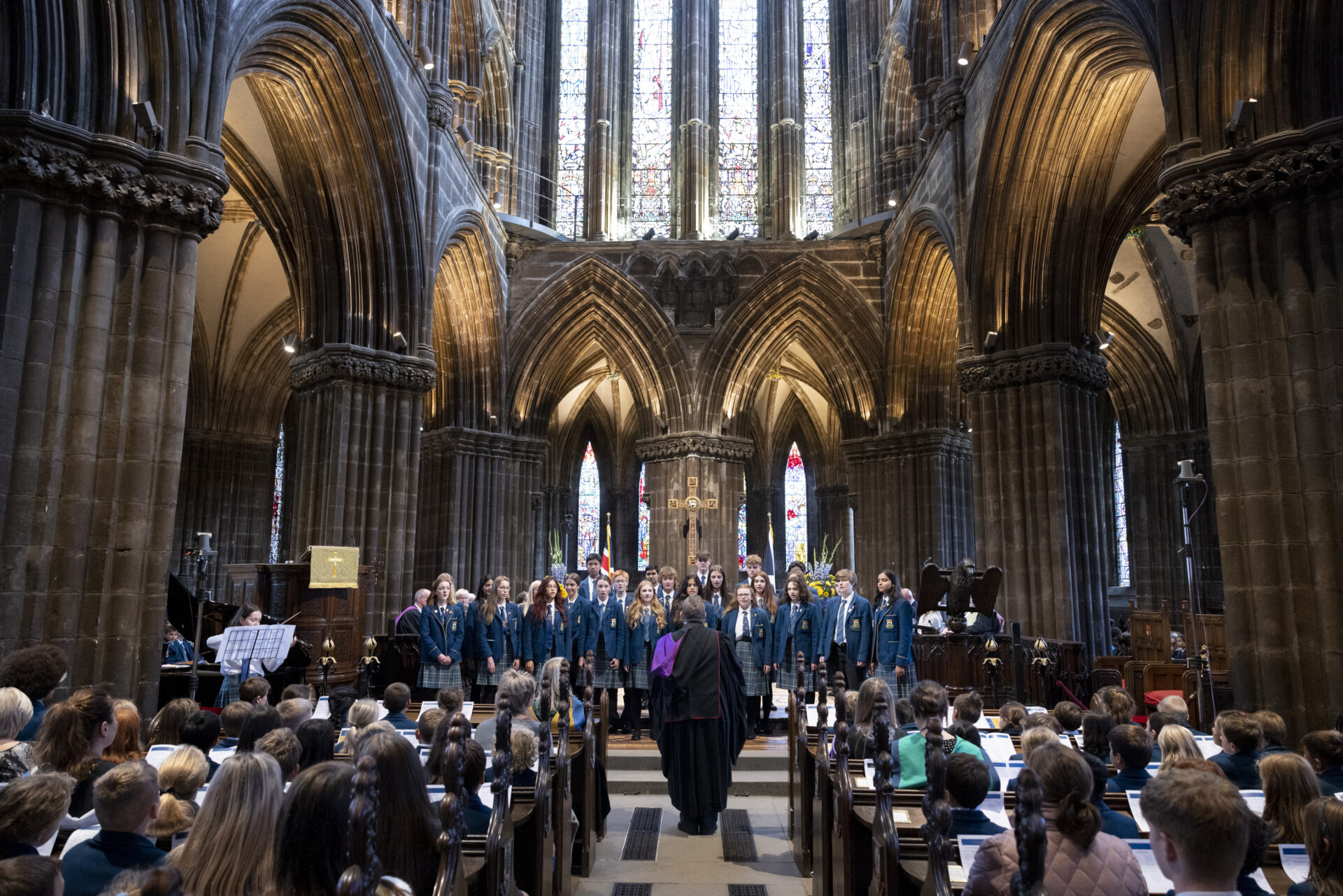HSOG History, Chapter 1: Tracing our roots – The Choir School of Glasgow Cathedral
, by HSOG Community
As The High School of Glasgow celebrates a remarkable 900th anniversary throughout 2024, we have launched #HSOGHistory, a series whereby once a month, we will be sharing insights and stories from our School’s illustrious history.
The first chapter in this series takes us on a historical journey back to the 12th century when Glasgow Cathedral and its Choir School were first established, marking the birth of our school.
Our exact date of foundation has been the subject of much debate and conjecture, and we will never know the exact date we were founded. However, it is well-known that education in Scotland was inextricably linked with the Church, with the starting point for Scottish education often attributed to the advent of Christianity.
The very first missionaries founded settlements across the United Kingdom which acted not only as places of Christian communion and devotion, but also as schools for training successors. With a particular focus on Latin (the language of the Church), future ecclesiastics were taught how to read and copy the books of Scripture.
St Ninian is often credited as the first Christian missionary in Scotland. According to tradition, he dedicated a small cemetery on the bank of Molendinar Burn, in an area which later became Glasgow. It is within this cemetery that St Kentigern, also known as St Mungo, (a missionary in the Brittonic Kingdom of Strathclyde in the sixth century and Glasgow’s venerable patron saint) is said to have constructed a cathedral for his own diocese in the latter half of the sixth century.

With tenuous written evidence definitively connecting Kentigern with Glasgow, it was only in the mid-eleventh century that historical records and documentation were deemed reliable enough to trace Bishops for a number of dioceses, including Glasgow. However, within the district of Glasgow there seemingly only existed absentee assistants to the Archbishops of York who claimed authority over the Scottish Church at the time.
Therefore, David I of Scotland was charged with reorganising these dioceses, both prior to and after acceding to the title of King of Scots in 1124. Whilst Earl of Cumbria, David created a bishopric out of his principality and appointed his former tutor, John Achaius, as the bishop of the lands which fell under his authority. He showed a particular interest in the development of Glasgow Cathedral on the site dictated by the tradition of St Kentigern, with money being dedicated to its construction from as early as 1114, some 10 years prior to his becoming King of Scots.
In addition to being a place of worship, every cathedral had a school run by cathedral clergy. These early schools, with a focus on an apprenticeship in religious learning under a scholarly bishop, also provided boy trebles for the Church choirs. Whilst the original function of such schools was to train future priests, they later opened their doors to lay students. These pupils were usually boys of noble families who were being prepared to take on higher positions in the Church, state or commercial affairs. Generally, admissions to such schools were below 100 pupils.
By 1136, the choir was consecrated at Glasgow Cathedral, with some authors suggesting that a school would therefore have been in existence long before this time.
A little later in the 12th century, under the remarkable leading Bishop Jocelin, we have clearer evidence of Jocelin developing a Sang School (Song School) with the primary aim of producing a choir to perform rhymed chants for the feast day of St Kentigern (13th January). Initially, boy choristers sang alongside the adults. However, upon the introduction of polyphony (a combination of several parts which each form their own melody whilst harmonising with one another), boy trebles began to make their own independent contributions to church music.

As such, the teaching of music at the Song School became more complex, resulting in fewer boys attending. More began completing their education at the Grammar School, seemingly set up by Jocelin due to his avid interest in education. At the same time, a decree promoted by the Third Lateran Council of the Western Church in 1179 stipulated that each cathedral had to provide a teacher who was not only responsible for the education of the clergy of its respective Church, but also to educate children of poorer scholars. However, there is much debate that suggests this latter point did not take effect until the mid-13th century.
Following the foundation of the University of Glasgow in the 1450s, the scholars from the Grammar School soon found themselves displaced from their accommodation at the Cathedral. However, Precentor of Glasgow, Simon Dalgleish, arguably saved the school at this time and set the course for its long and illustrious history which has extended until the present day.
The donation of a tenement lying on the west side of Meikle Wynd (later referred to as Grammar School Wynd) in Glasgow was made by Dalgleish to Master Alexander Galbraith (then Rector and Master of the Grammar School) and his successors.
This period marked a shift in the responsibility for education, namely appointing Masters and assigning buildings to be used for educational purposes. Moving away from the dominance of the Church, education came under the responsibility of secular Town authorities for the first time.
Much of the facts and information included within this article were sourced from two books written by former staff members: Brian Lockhart’s The Town School and Harry Ashmall’s The High School of Glasgow. Should you wish to read about this stage of our history in more detail, you can order a copy of their books here: www.hsogcommunity.co.uk/shop/.
The next instalment of #HSOGHistory will be available next month.

